I am working on an exercise asking me "Plot the residuals against Y_hat, each predictor variable, and each two-factor interaction term on separate graphs." Here is a snippet of the data set I am using:
> dput(head(Commercial_Properties, 10))
structure(list(Rental_Rates = c(13.5, 12, 10.5, 15, 14, 10.5,
14, 16.5, 17.5, 16.5), Age = c(1, 14, 16, 4, 11, 15, 2, 1, 1,
8), Op_Expense_Tax = c(5.02, 8.19, 3, 10.7, 8.97, 9.45, 8, 6.62,
6.2, 11.78), Vacancy_Rate = c(0.14, 0.27, 0, 0.05, 0.07, 0.24,
0.19, 0.6, 0, 0.03), Total_Sq_Ft = c(123000, 104079, 39998, 57112,
60000, 101385, 31300, 248172, 215000, 251015), residuals = c(`1` = -1.03567244005944,
`2` = -1.51380641405037, `3` = -0.591053402133659, `4` = -0.133568082335235,
`5` = 0.313283765150399, `6` = -3.18718522392237, `7` = -0.538356748944345,
`8` = 0.236302385996349, `9` = 1.98922037248654, `10` = 0.105829602747806
)), row.names = c(NA, -10L), class = c("tbl_df", "tbl", "data.frame"
))
From here I created the proper linear model that includes two factor interaction terms:
commercial_properties_lm_two_degree_interaction <-
lm(data=Commercial_Properties,
formula=Rental_Rates ~ (Age + Op_Expense_Tax + Vacancy_Rate + Total_Sq_Ft)^2)
Next what I was hoping to accomplish was to plot the residuals not just of the linear terms, but also of the interaction terms. I attempted to do this using the residualPlots() function in the car package
library(car)
residualPlots(model=commercial_properties_lm_two_degree_interaction,
terms=~ (Age + Op_Expense_Tax + Vacancy_Rate + Total_Sq_Ft)^2)
When applied in this way the output only produced the residual plots against the linear terms, it didn't plot any interactions. So I then attempted to do it manually, but I got an error:
residualPlots(model=commercial_properties_lm_two_degree_interaction,
terms=~ Age + Op_Expense_Tax + Vacancy_Rate + Tota_Sq_Ft +
Age:Op_Expense_Tax + Age:Vacancy_Rate)
Error in termsToMf(model, terms) : argument 'terms' not interpretable.
Now if I were to do things completely manually I was able to get an interaction plot for example:
with(data=Commercial_Properties, plot(x=Op_Expense_Tax * Vacancy_Rate, y=residuals))
plotted successfully. My issue is that sure I can do this completely manually for a reasonably small amount of variables, but it will get extremely tedious once the amount of variables begins to get larger.
So my question is if there is a way to use an already created function in R to make residual plots of the interaction terms or would I be left to doing it completely manually or most likely having to write some sort of loop ?
Note, I'm not asking about partial residuals. I haven't gotten to that point in my text I'm using. Just plain interaction terms against residuals.
